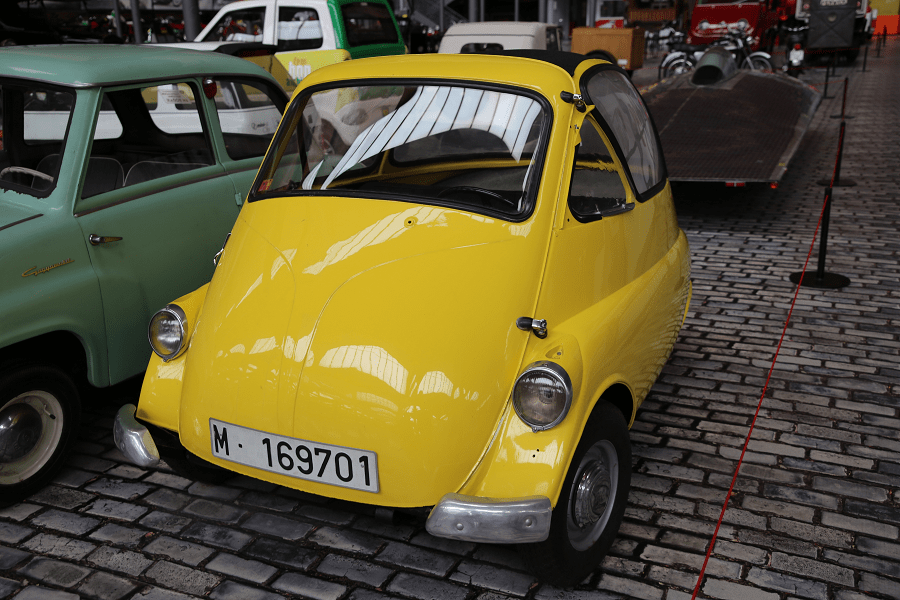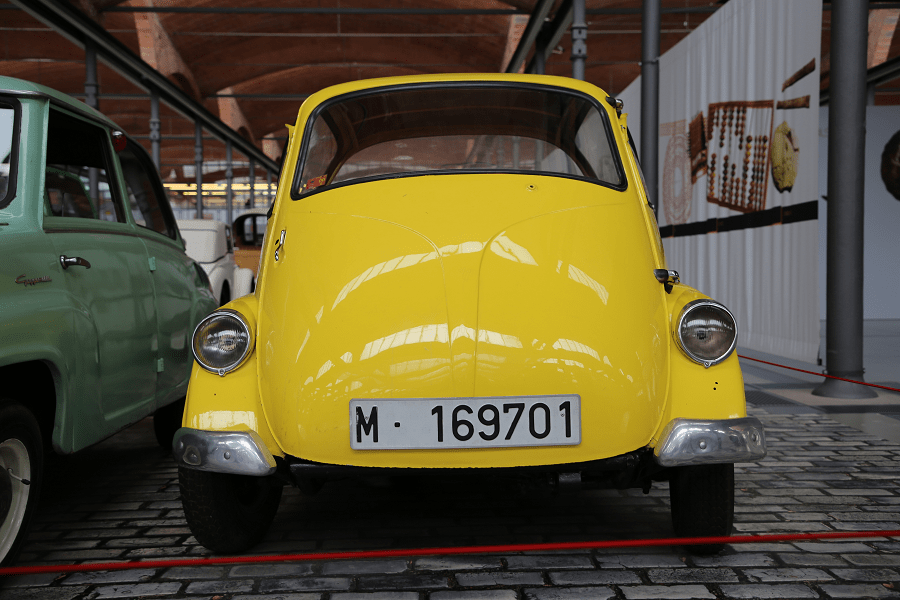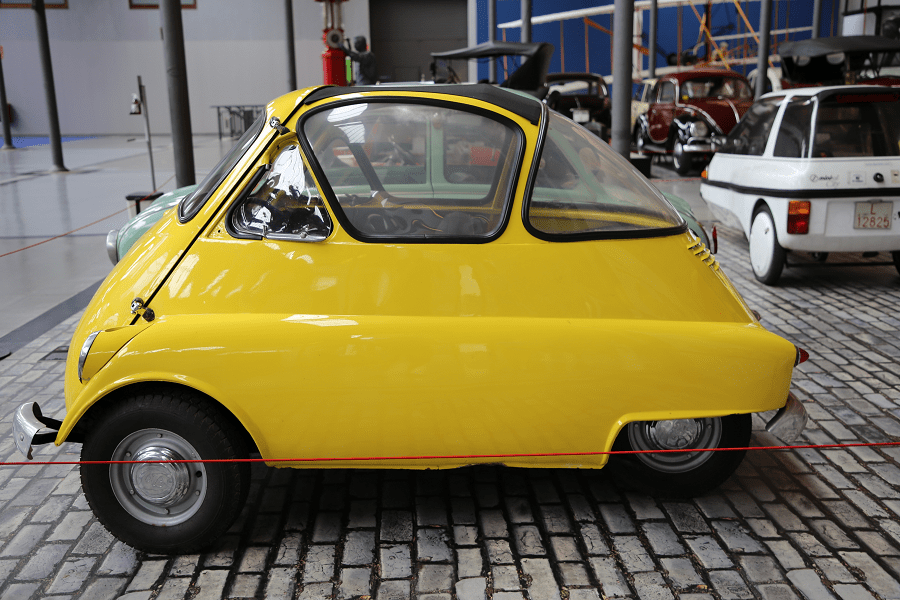BMW Isetta 600
The BMW 600 is a four-seater microcar produced by the German automaker BMW from mid-1957 until November 1959. Partially based on the BMW Isetta two-seater, it was BMW’s first postwar four-seater economy car. It was not a sales success, but it began the design process for its more successful successor, the BMW 700.
BMW needed to expand its model range, but they did not have the resources to develop an all-new car with an all-new engine. Therefore, it used the Isetta as starting point for a new four seat economy car.
As a result, the 600 used the front suspension and front door of the Isetta. The need to carry four people required a longer frame, a different rear suspension, and a larger engine. A new perimeter frame was designed, using box section side members and straight tube crossmembers. The rear suspension was an independent semi trailing arm design; this was the first time BMW had used this system. The chassis had a wheelbase of 1,700 millimetres (67 in), a front track of 1,220 millimetres (48 in), and a rear track of 1,160 millimetres (46 in).
The 600 was powered by the 582 cc (35.5 cu in) flat-twin engine from the R67 motorcycle/sidecar combination. This engine, which delivered 19.5 horsepower (14.5 kW) at 4,500 revolutions per minute, was mounted behind the rear wheels. A four-speed manual gearbox was standard, while a Saxomat semi-automatic transmission was available. The 600 had a top speed of approximately 100 km/h.
Access to the rear seats was by a conventional door on the right side of the vehicle.
Model of the 1957
Made in Germany (Milan)
Engine: 236 cc; 1 cylinder
Power: 9,5 HP
Max. speed: 75 km/h
Fuel consumption: 3 l/100 km














